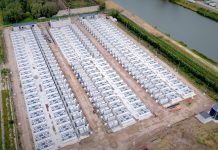
Western Power Distribution has launched a demand-side response business to sell flexibility both into National Grid’s schemes as well as balance its own local networks
It will now begin to woo medium and large businesses with onsite generation and flexible energy consumption profiles.
The Flexible Power project initially focuses on the East Midlands. If successful over the next three years, it may be rolled out more widely.
The move signals the shift of distribution network operators (DNOs) towards distribution system operators (DSOs) as a result of the volume of connected generation they now have to manage.
Distribution-connected generation is causing constraint issues at a local level, which also affects the national system. DNOs are faced with a choice of throwing copper at the problem, which is expensive, or trying to develop smarter solutions.
WPD will use the aggregator model to contract services into National Grid schemes as well as keep some capacity back to manage local constraints.
It will use Kiwi Power’s technology to underpin the business and the aggregator will provide control desk, National Grid interface and back office services while WPD builds its own control room and back office in the midlands.
A spokesman for the firm said it hoped to provide a very high standard of service delivery to National Grid and therefore highly reliable revenues for contracted business customers.
While it does not propose higher per megawatt payments than other market players, by reliably delivering 100% of what is contracted to National Grid schemes, WPD believes it can remove the clawback that can erode revenues for DSR providers.
To ensure that outcome, WPD plans to put excess capacity into its balancing services ‘buckets’ contracted to National Grid.
While that ‘gold plated’ approach would reduce its profit from the venture, WPD believes the benefits in terms of local network constraint management will enable it to defer investment.
The DNO is one of a number of network companies examining procurement of flexibility services. UK Power Networks recently indicated a ramping up of its demand-side response activity, stating it will procure more flexibility in 2017 via aggregators and directly with industrial and commercial consumers.
Meanwhile, SSE boss Alistair Phillips-Davies last month told the Future of Utilities conference that SSE’s network operation was “now beginning to run tenders to manage local constraints in our distribution networks through flexibility services, such as demand-side response, energy storage and stand-by generation”.
See WPD’s Flexible Power website here.
Related stories:
UKPN sees battery boom, outlines DSR plans
Government sets out smart grid vision
WPD ramps up DSR trials, calls for participants
Ofgem: Energy flexibility will become more valuable than energy efficiency
Smart grids ‘require local control and businesses must play or pay’
Rewrite rules for DSR and power networks, urges thinktank
Free demand-side response report
Follow us at @EnergystMedia. For regular bulletins, sign up for the free newsletter.



